
The Enchanting North Shore of Minnesota
Discover the North Shore of Minnesota: A Perfect Blend of Natural Beauty, Outdoor Adventures, and Charming Small Towns Along the Edge of Lake Superior.
The North Shore in Minnesota is a scenic stretch along the northern edge of Lake Superior, offering visitors a blend of natural beauty, outdoor adventures, and charming small towns. This destination is perfect for nature lovers, photographers, and anyone looking to escape the hustle and bustle of city life. One of the main attractions of the North Shore is its stunning landscapes. The shoreline is dotted with rocky cliffs, pristine beaches, and lush forests. Gooseberry Falls State Park is a must-visit spot, known for its stunning waterfalls and well-maintained hiking trails. You can also explore Split Rock Lighthouse, an iconic landmark that offers breathtaking views of Lake Superior. In addition to its natural wonders, the North Shore is home to quaint towns like Grand Marais and Two Harbors. These towns offer a mix of cozy cafes, unique shops, and friendly locals. Don't miss the chance to try some local delicacies, including fresh fish from Lake Superior and delicious baked goods from the area's renowned bakeries. Outdoor activities abound on the North Shore. In the summer, enjoy hiking, kayaking, and fishing. Winter brings opportunities for skiing, snowshoeing, and ice fishing. The Superior Hiking Trail, which runs parallel to the shore, offers some of the best hiking in the region with magnificent views of the lake and surrounding wilderness.
Local tips in North Shore
- Pack layers as the weather can change quickly along the lake.
- Visit during fall for spectacular foliage views.
- Reserve accommodations in advance, especially during peak seasons.
- Carry a map as cell service can be spotty in remote areas.
- Try the local smoked fish for a true taste of the region.
The Enchanting North Shore of Minnesota
The North Shore in Minnesota is a scenic stretch along the northern edge of Lake Superior, offering visitors a blend of natural beauty, outdoor adventures, and charming small towns. This destination is perfect for nature lovers, photographers, and anyone looking to escape the hustle and bustle of city life. One of the main attractions of the North Shore is its stunning landscapes. The shoreline is dotted with rocky cliffs, pristine beaches, and lush forests. Gooseberry Falls State Park is a must-visit spot, known for its stunning waterfalls and well-maintained hiking trails. You can also explore Split Rock Lighthouse, an iconic landmark that offers breathtaking views of Lake Superior. In addition to its natural wonders, the North Shore is home to quaint towns like Grand Marais and Two Harbors. These towns offer a mix of cozy cafes, unique shops, and friendly locals. Don't miss the chance to try some local delicacies, including fresh fish from Lake Superior and delicious baked goods from the area's renowned bakeries. Outdoor activities abound on the North Shore. In the summer, enjoy hiking, kayaking, and fishing. Winter brings opportunities for skiing, snowshoeing, and ice fishing. The Superior Hiking Trail, which runs parallel to the shore, offers some of the best hiking in the region with magnificent views of the lake and surrounding wilderness.
When is the best time to go to North Shore?
Unmissable attractions to see
Tettegouche State Park
Discover the scenic beauty and adventure at Tettegouche State Park, a prime destination for hiking, birdwatching, and exploring Minnesota's North Shore.

Glensheen Mansion
Explore the opulent Glensheen Mansion, a historical gem in Duluth, Minnesota, showcasing early 20th-century architecture and rich family history.

Jay Cooke State Park
Explore the stunning landscapes and diverse ecosystems of Jay Cooke State Park, a natural gem in Minnesota perfect for outdoor adventures.

Bayfront Festival Park
Explore Bayfront Festival Park, where nature meets culture in Duluth, Minnesota, featuring live music, beautiful landscapes, and family-friendly activities.

Lake Superior Maritime Visitor Center
Discover the maritime history of the Great Lakes at Lake Superior Maritime Visitor Center in Duluth, MN. A must-visit for all history enthusiasts!

Kitchi Gammi Park
Discover Kitchi Gammi Park, a stunning natural oasis in Duluth, Minnesota, featuring scenic trails, unique rock formations, and breathtaking views of Lake Superior.

North Shore Scenic Railroad
Experience breathtaking views and rich history with a scenic ride on the North Shore Scenic Railroad in Duluth, Minnesota.
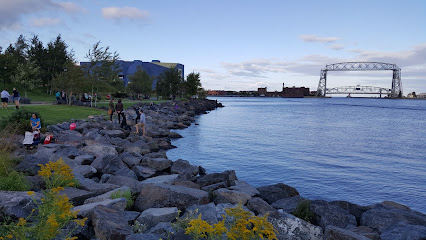
Lester Park Trails & Playground
Discover the natural beauty and family-friendly fun at Lester Park Trails & Playground in Duluth, Minnesota, where outdoor adventures await.

Lakewalk
Explore the scenic Lakewalk in Duluth, Minnesota, where stunning views of Lake Superior meet serene hiking trails perfect for all outdoor lovers.

The Duluth Lakewalk
Explore the scenic Duluth Lakewalk, a picturesque trail along Lake Superior offering stunning views, parks, and cultural experiences in Minnesota.

Lake Superior Railroad Museum
Discover the history and heritage of railroads at the Lake Superior Railroad Museum, a unique attraction in Duluth, Minnesota, perfect for all ages.

William A Irvin Museum
Explore the maritime history of Duluth at the William A Irvin Museum, a unique floating museum on Lake Superior's shores.

Spirit Mountain Recreation Area
Explore year-round adventures at Spirit Mountain Recreation Area in Duluth, MN, where skiing, biking, and breathtaking views await you.

The St. Louis County Depot
Explore the cultural heart of Duluth at The St. Louis County Depot, a historic hub featuring art, history, and family-friendly activities.

Duluth Children's Museum
Experience creativity and learning at Duluth Children's Museum, where young imaginations thrive through interactive exhibits and engaging programs.
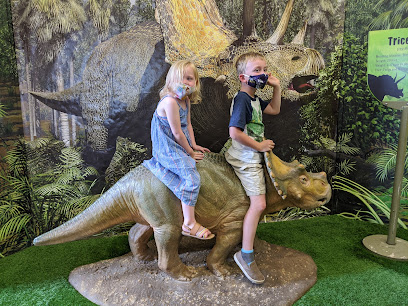
Essential places to dine
Grandma's Saloon & Grill
Experience delightful American cuisine at Grandma's Saloon & Grill with stunning views of Lake Superior in Duluth's Canal Park.

OMC Smokehouse
Discover OMC Smokehouse: A barbecue paradise in Duluth offering mouthwatering smoked meats and vibrant local flavors.

Rustic Inn Cafe
Experience delightful breakfasts and exquisite pies at Rustic Inn Cafe, your perfect stop on Minnesota's scenic North Shore.

Va Bene
Experience authentic Italian cuisine at Va Bene in Duluth - where every meal is a celebration of flavor and tradition.

Pickwick Restaurant & Pub
Experience the best of American cuisine at Pickwick Restaurant & Pub in Duluth - where great food meets cozy ambiance.
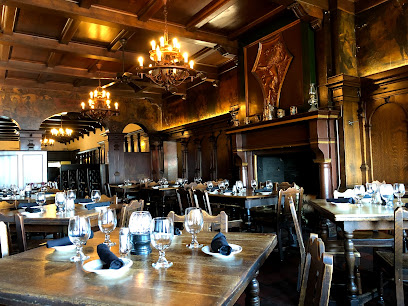
Angry Trout Cafe
Discover culinary delights at Angry Trout Cafe in Grand Marais - your go-to spot for fresh seafood and hearty breakfasts along Minnesota's North Shore.

My Sister's Place
Discover the heartwarming flavors of American cuisine at My Sister's Place in Grand Marais - where family meets flavor!

Northern Waters Smokehaus
Experience Duluth's culinary delight at Northern Waters Smokehaus with its exquisite smoked fish and gourmet sandwiches amidst scenic views.

Grandma's Saloon & Grill Miller Hill
Experience authentic American cuisine at Grandma's Saloon & Grill in Duluth—where great food meets a welcoming atmosphere.

New Scenic Café
Discover New Scenic Café: A delightful dining destination on Lake Superior's North Shore featuring locally sourced cuisine and breathtaking views.

Vanilla Bean - Two Harbors
Experience the best American breakfast at Vanilla Bean in Two Harbors - where delicious meals meet warm hospitality.

Clyde Iron Works
Discover Clyde Iron Works: A delightful blend of American cuisine and craft beer in Duluth's historic setting.
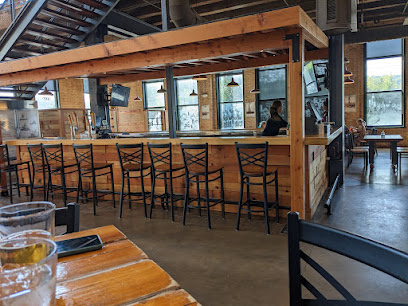
Northwoods Family Grille
Discover delicious burgers and barbecue at Northwoods Family Grille in Silver Bay - where family dining meets rustic charm!

Bellisio's Italian Restaurant & Wine Bar
Savor the essence of Italy at Bellisio's Italian Restaurant & Wine Bar in Duluth - where exceptional cuisine meets fine wines.
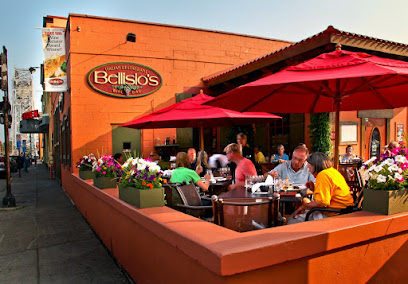
Lake Avenue Restaurant & Bar
Discover exquisite New American cuisine at Lake Avenue Restaurant & Bar in Duluth's scenic Canal Park—where flavor meets local charm.

Markets, malls and hidden boutiques
Miller Hill Mall
Discover an array of shopping, dining, and entertainment at Miller Hill Mall, the premier retail destination in Duluth, Minnesota.

DeWitt–Seitz Marketplace
Explore DeWitt–Seitz Marketplace, a unique shopping destination in Duluth featuring local shops, eateries, and stunning views of Lake Superior.

Burlington Station
Explore Burlington Station: A delightful candy store, coffee shop, and gift haven in the heart of Two Harbors, MN.

Two Loons Gallery and Boutique
Explore the artistic heart of Duluth at Two Loons Gallery and Boutique, your destination for unique gifts and local craftsmanship.
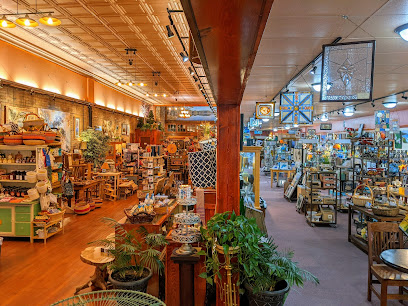
Weldon's Gift Shop
Discover unique gifts and local crafts at Weldon's Gift Shop in Two Harbors, Minnesota—a treasure trove for every traveler.

Flagship
Explore Flagship in Duluth for custom t-shirts and unique apparel that reflect your personal style and local culture.

Plato's Closet - Duluth, MN
Explore sustainable fashion at Plato's Closet in Duluth, MN, where trendy styles meet affordable prices for men and women.

Northwoods Confections & Gifts
Discover the sweetness of Duluth at Northwoods Confections & Gifts, where delightful treats and unique gifts await every visitor.

Amish Furniture Haus
Discover exquisite handcrafted furniture at Amish Furniture Haus in Duluth, MN, showcasing the beauty of traditional Amish craftsmanship for your home.

Eagles Nest Gift
Discover unique local crafts and souvenirs at Eagles Nest Gift in Silver Bay, MN - a must-visit for every traveler exploring the North Shore.

Indigenous First Art & Gift Shop
Explore authentic Indigenous art and crafts at Indigenous First Art & Gift Shop in Duluth, a cultural gem for unique souvenirs and gifts.

Lake Superior Magazine
Explore local gifts and publications that celebrate the stunning Lake Superior region at Lake Superior Magazine in Duluth, Minnesota.

Superior Finds
Explore the charm of Superior Finds, a gift shop filled with unique treasures that capture the essence of Two Harbors, Minnesota.

Agate Bay Outfitters LLC
Explore Agate Bay Outfitters LLC for unique local gifts and outdoor gear that embody the spirit of Minnesota's North Shore.

Whimsy
Discover the enchanting world of children's fashion at Whimsy, Duluth's charming boutique for unique apparel and accessories.

Essential bars & hidden hideouts
Grandma's Saloon & Grill
Savor the best of American cuisine at Grandma's Saloon & Grill, a top destination in Duluth's Canal Park with a lively atmosphere and local flavors.

Sir Benedicts Tavern on the Lake
Discover the vibrant atmosphere of Sir Benedicts Tavern on the Lake, offering delicious American cuisine, craft beers, and live music by Lake Superior.

Pickwick Restaurant & Pub
Experience the heart of Duluth with exceptional American cuisine at Pickwick Restaurant & Pub, offering a perfect blend of flavor and atmosphere.

Black Woods Bar & Grill
Experience the flavors of Minnesota at Black Woods Bar & Grill, where delicious food and a warm atmosphere await you in Two Harbors.
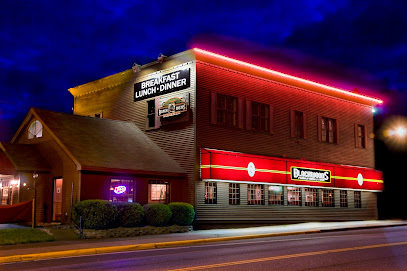
New Scenic Café
Experience culinary creativity and stunning views at New Scenic Café, a must-visit restaurant along Lake Superior's North Shore.

Vikre Distillery
Experience the art of craft cocktails at Vikre Distillery in Duluth, Minnesota, where local flavors come alive in a stunning lakeside setting.

Fitger's Brewhouse
Discover the charm of Fitger's Brewhouse, a historic brewpub in Duluth offering craft beers and delicious American fare with lake views.

Lake Avenue Restaurant & Bar
Experience the best of New American cuisine at Lake Avenue Restaurant & Bar in Duluth, where upscale dining meets stunning waterfront views.

310 Pub
Experience the lively flavors and stunning views at 310 Pub, a top-rated grill and American restaurant in Duluth's Canal Park.

Mr. D's Bar & Grill
Experience the best of Duluth at Mr. D's Bar & Grill, where delicious grilled dishes meet a warm, inviting atmosphere.

The Other Place Bar & Grill
Discover the vibrant atmosphere and delicious American comfort food at The Other Place Bar & Grill in Duluth, MN.

Lyric Kitchen · Bar
Experience the vibrant atmosphere and delicious culinary offerings at Lyric Kitchen · Bar in Duluth, a perfect spot for food and fun.

McQuade's Pub and Grill
Experience the best of Minnesota dining at McQuade's Pub and Grill, where local flavors and a welcoming atmosphere await you.

Black Water Lounge
Discover the vibrant nightlife and exquisite dining experience at Black Water Lounge, Duluth's premier destination for cocktails and entertainment.

The Reef
Experience the ultimate nightlife at The Reef in Duluth, where karaoke, sports, and arcade games create unforgettable memories.

Local Phrases about North Shore
-
- HelloHey there
[Hey thair] - GoodbyeSee ya
[See yah] - YesYah
[Yah] - NoNah
[Nah] - Please/You're welcomeSure thing
[Shur thing] - Thank youThanks a lot
[Thanks uh lot] - Excuse me/SorryPardon me
[Pard'n me] - How are you?How's it goin'?
[Hows it goin] - Fine. And you?Good. You?
[Gud. You?] - Do you speak English?You speak English?
[Yuh speak English?] - I don't understandI ain't gettin' ya
[I aint gettin ya]
- HelloHey there
-
- I'd like to see the menu, pleaseCan I take a peek at the menu?
[Can I take uh peek at the menu?] - I don't eat meatI don't do meat
[I don't do meat] - Cheers!Bottoms up!
[Bottoms up!] - I would like to pay, pleaseI'll settle up now, thanks
[I'll settle up now, thanks]
- I'd like to see the menu, pleaseCan I take a peek at the menu?
-
- Help!I need a hand!
[I need uh hand!] - Go away!Beat it!
[Beat it!] - Call the Police!Get the cops!
[Get the cops!] - Call a doctor!Get a doc!
[Get a doc!] - I'm lostI'm turned around
[I'm turned around] - I'm illI ain't feelin' good
[I aint feelin good]
- Help!I need a hand!
-
- I'd like to buy...I'm lookin' to buy...
[I'm lookin to buy] - I'm just lookingJust browsin'
[Just browsin'] - How much is it?What's the damage?
[Whats the damage?] - That's too expensiveThat's spendy
[That's spendy] - Can you lower the price?Can ya knock it down?
[Can ya knock it down?]
- I'd like to buy...I'm lookin' to buy...
-
- What time is it?What's the time?
[Whats the time?] - It's one o'clockIt's one
[It's one] - Half past (10)Ten thirty
[Ten thirty] - MorningMornin'
[Mornin'] - AfternoonAfternoon
[Afternoon] - EveningEvenin'
[Evenin'] - YesterdayYest'day
[Yest'day] - TodayToday
[Today] - TomorrowTomorrow
[Tomorrow] - 1One
[One] - 2Two
[Two] - 3Three
[Three] - 4Four
[Four] - 5Five
[Five] - 6Six
[Six] - 7Seven
[Seven] - 8Eight
[Eight] - 9Nine
[Nine] - 10Ten
[Ten]
- What time is it?What's the time?
-
- Where's a/the...?Where's the...?
[Wheres the...?] - What's the address?What's the addy?
[Whats the addy?] - Can you show me (on the map)?Can you point it out (on the map)?
[Can you point it out (on the map)?] - When's the next (bus)?When's the next (bus)?
[Whens the next (bus)?] - A ticket (to ....)A ticket (to ....)
[A ticket (to ....)]
- Where's a/the...?Where's the...?
History of North Shore
-
The North Shore of Minnesota was originally inhabited by the Ojibwe people, also known as the Anishinaabe. The region's abundant natural resources, including fish from Lake Superior and game from the surrounding forests, made it an ideal location for settlement. The Ojibwe people have a deep spiritual connection to the land and waters, which is reflected in their traditions and stories passed down through generations.
-
In the early 17th century, French explorers such as Samuel de Champlain and Pierre-Esprit Radisson arrived in the region. They were drawn by the prospects of fur trading and the vast, uncharted territories. This era marked the beginning of significant changes for the indigenous populations, as European goods and diseases began to spread.
-
By the late 1600s, fur trading posts were established along the North Shore. The North West Company and the Hudson's Bay Company were prominent players in this trade, which led to economic and cultural exchanges between Europeans and Native Americans. Grand Portage became a key trading post and portage route, linking the Great Lakes with the interior of the continent.
-
The Treaty of La Pointe, signed in 1854, resulted in the cession of Ojibwe lands to the United States, paving the way for European-American settlement. This treaty had profound impacts on the Ojibwe people, including displacement and changes to their traditional ways of life. Grand Portage Indian Reservation was established as a result of this treaty.
-
The late 19th and early 20th centuries saw a boom in logging and mining activities along the North Shore. The vast forests of the region were harvested to supply timber for construction and industry, while iron ore from the nearby Mesabi Range fueled the steel industry. The arrival of the Duluth and Iron Range Railroad facilitated the transportation of these resources.
-
By the early 20th century, the scenic beauty of the North Shore began to attract tourists. The establishment of state parks, such as Gooseberry Falls (1937) and Split Rock Lighthouse (1945), helped to preserve the natural landscape and provide recreational opportunities. These parks remain popular destinations for visitors seeking outdoor adventure and breathtaking views of Lake Superior.
-
Constructed in 1910, Split Rock Lighthouse is one of the most iconic landmarks on the North Shore. It was built in response to the devastating shipwrecks that occurred during the infamous Mataafa Storm of 1905. The lighthouse operated until 1969 and is now a historic site, offering tours and insights into the maritime history of the region.
-
Today, the North Shore is a blend of historical richness and natural beauty, attracting visitors year-round. Communities like Duluth, Two Harbors, and Grand Marais offer a mix of cultural experiences, from local art galleries to traditional Native American crafts. The region continues to celebrate its diverse heritage through festivals, museums, and educational programs.
North Shore Essentials
-
The North Shore of Minnesota is accessible via several routes. The nearest major airport is Duluth International Airport (DLH), which is approximately 10 miles from downtown Duluth, the gateway to the North Shore. From Duluth, you can drive along the scenic Highway 61, which runs parallel to the shoreline of Lake Superior, all the way to the Canadian border. Alternatively, Minneapolis-Saint Paul International Airport (MSP) is about a 3-hour drive to Duluth. There are also bus services from both Duluth and Minneapolis to various points along the North Shore.
-
Transportation along the North Shore is primarily by car, making it the most convenient way to explore all the attractions and scenic spots. Car rentals are available in Duluth and other major towns along the route. There are also shuttle services and guided tours that can take you to popular destinations like Split Rock Lighthouse, Gooseberry Falls, and Grand Marais. Biking is another popular option, with many well-maintained trails along the coast. Public transportation options are limited, so plan accordingly.
-
The currency used in Minnesota, like the rest of the United States, is the US Dollar (USD). Credit and debit cards are widely accepted in most establishments, including hotels, restaurants, and shops. It's a good idea to carry some cash for smaller purchases, especially in more remote areas or at local markets. ATMs are available in most towns along the North Shore, but it's wise to withdraw cash in larger towns like Duluth or Grand Marais before heading to more secluded areas.
-
The North Shore is generally a safe destination for tourists. However, as with any travel, it's important to take standard precautions. Avoid isolated areas after dark and keep your belongings secure. Be cautious when hiking or exploring remote areas, as wildlife encounters are possible. There are no specific high-crime areas targeting tourists, but it's always best to stay vigilant and aware of your surroundings. Emergency services are reliable, and the local community is friendly and helpful.
-
In case of an emergency, dial 911 for immediate assistance. Emergency services, including police, fire, and medical, are available throughout the North Shore area. Duluth has several hospitals, such as St. Luke's Hospital and Essentia Health-St. Mary's Medical Center. Smaller towns have clinics and urgent care facilities. It is recommended to have travel insurance that covers medical emergencies. Pharmacies are available in larger towns for minor health issues and over-the-counter medications.
-
Fashion: Do dress in layers, as weather can change quickly along the North Shore. Comfortable walking shoes are a must. Avoid heavy perfumes or colognes, especially when hiking. Religion: Do respect local customs, especially in areas with Native American heritage. Public Transport: Do be prepared for limited public transport options. Renting a car is the best way to get around. Greetings: Do greet people with a friendly 'hello' or 'hi.' Minnesotans are known for their friendliness. Eating & Drinking: Do try local delicacies such as walleye, wild rice, and blueberry pie. Don't forget to tip your servers, as it is customary in the United States.
-
To experience the North Shore like a local, take time to visit the smaller towns and chat with shop owners and residents. Explore the many state parks, including Gooseberry Falls and Tettegouche, for hiking and stunning views of Lake Superior. Check out local events and festivals, such as the Fisherman's Picnic in Grand Marais. Don't miss the chance to try fresh fish from Lake Superior, and make sure to visit local bakeries for treats like the iconic pie at Betty's Pies.
Nearby Cities to North Shore
-
Things To Do in Ely
-
Things To Do in Grand Marais
-
Things To Do in Saint Cloud
-
Things To Do in Saint Paul
-
Things To Do in Eau Claire
-
Things To Do in Minneapolis
-
Things To Do in Wausau
-
Things To Do in Winona
-
Things To Do in Mankato
-
Things To Do in La Crosse
-
Things To Do in Marquette
-
Things To Do in Wahpeton
-
Things To Do in Fargo
-
Things To Do in Wisconsin Dells
-
Things To Do in Appleton













